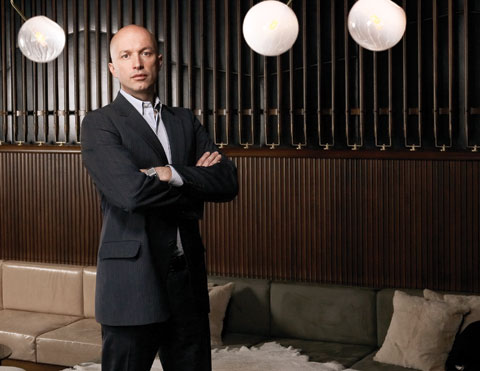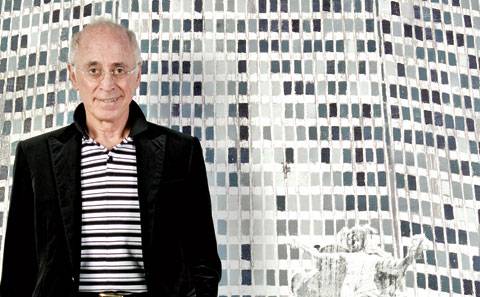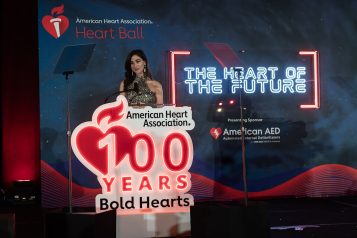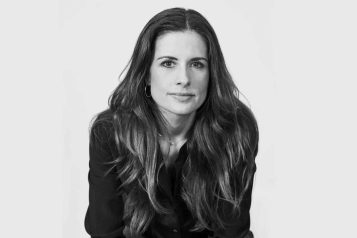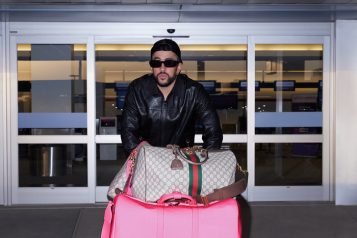In his last year as Art Basel Miami Beach’s fearless director, Samuel Keller catches up with Haute Living just weeks before the big show to tell us what art means to him.
By Ayesha Khan
Photography by Bob Martus
Post Production by Luke Hanscom
This is what art does, it helps us bring into the picture things that we have not noticed or seen. Looking at the world through an artist’s eyes helps us take a very individualistic perspective, and I find that it is very enriching for our lives, to live with art.
Critics of 20th- and 21st-century art would say that the more conventional techniques and works of the Renaissance masters and Impressionists were the last great manifestations of fine art. But, in the timeless words of the great American Abstract Expressionist, Jackson Pollock, “New needs need new techniques. And the modern artists have found new ways and new means of making their statements… The modern painter cannot express this age, the airplane, the atom bomb, the radio, in the old forms of the Renaissance or of any other past culture.” It is this ethos that drives today’s most important art shows, where art is no longer limited to the four corners of the frame, or the four walls of the gallery.
Once again the eyes of the art world turn to the azure shores of Miami for Art Basel Miami Beach, the cultural and social event of the year. Poised between Europe, Latin America, and the northern United States, Miami offers the ideal crossroads (and weather) for such an event, which has been dubbed “the favorite winter meeting place of the art world.” But beyond the glitz and glamour that has the attention of the world’s society mavens, movie stars, and business impresarios is a unique, pure message that transcends all borders and world conflict. It is a message that speaks of innocence, creativity, and resilience in a world plagued by recession, conflict, and environmental chaos.
And it is this theme that strikes a chord with Art Basel and Art Basel Miami Beach director Samuel Keller, often regarded as the most influential man in the world of art. “We hope to make a contribution so that people may look with more subtlety and differentiation to the world. This is what art does, it helps us bring into the picture things that we have not noticed or seen. Looking at the world through an artist’s eyes helps us take a very individualistic perspective, and I find that it is very enriching for our lives, to live with art,” Keller says on a chilly evening in New York City. Just weeks before the big show, his days are filled with art auctions and meetings with the movers and shakers of the art world. But through all the frenzy and multimillion-dollar deals, he still maintains a humility and trademark Swiss neutrality that allow him to focus on the true essence and message of art.
A native of Basel, Keller grew up in a city where art was an integral part of the urban culture. Seeing his hometown transform into an international art haven each year since 1970 inevitably had a strong influence on the young art connoisseur who went on to study art history at the University of Basel. Having been involved with Art Basel since 1994, Keller brought fresh insight to the branding and identity of the show. During his tenure, he has launched popular Art Basel mainstays such as Art Film, Art Video Lounge, Art Sound Lounge, Art Premiere, Art Positions, Public Art Projects, Art Perform, Art Lobby, Art Kabinett, Art loves Music, Art loves Architecture, Art loves Design, Art loves Fashion, Art loves Film, and Art Basel’s VIP Services. But like the great artists that inspire him, Keller strove further to achieve excellence, and saw a growing need for an art show in North America that would match its Swiss counterpart in caliber. Thus, Art Basel Miami Beach was born, opening up the world of Art Basel to an entirely new audience.
Looking back on five successful years of Art Basel Miami Beach, Keller says, “If you think about it, this was a high-risk venture. The first year, it didn’t happen because of 9/11 and only a few years later it has become the most important art event in America and the second most important art fair in the world. It’s the finest list of galleries that have ever participated in an art fair in America this year. The quality of the art that’s on show, as well as the variety, is unique. You won’t find that anywhere else I would say [the show] has greatly evolved, and has gone beyond all of our expectations.”
The evolution continues. This sixth installment of Art Basel Miami Beach not only includes revamped versions of Art Basel staples such as Art Nova (where galleries are invited to showcase the work by three of their most promising emerging artists), Art Positions (where shipping containers are converted to public art spaces by avant-garde architects) and Art Kabinett (where 15 galleries are given the chance to host mini curated shows), it will also feature an interesting new initiative entitled Art Supernova. In a collaborative effort, 20 international galleries will share a common exhibition space to showcase the videos, performances, artist files, books, and catalogs of their artists. Curated by Simon Lamunière (curator of Art Unlimited at Art Basel since 2000, curator of Interversion, Geneva), this experimental group show promises to garner great interest.
“The Nova and Supernova sections are really dedicated to bringing new works fresh from the studios by some of the most talented emerging artists,” Keller says. “Another thing that I think we have been able to contribute is to bring into the picture new media and the work of young artists. We put a big emphasis on showing a lot of new work every year.” Guests can expect to see the work of more than 2,000 international artists hailing from as far and wide as Shanghai and South Africa. And, of course, a host of exclusive parties (including two lavish beachside affairs hosted at the Delano by main sponsor UBS) is sure to keep the show’s haute clientele entertained.
It is these crossover events that, each year, prove to be just as integral to the show as the action at the convention center. “A lot of architects and entertainment industry people are going to look at what artists are doing, so I think it’s as much about networking as it is meeting talented people,” Keller asserts. It’s also about meeting the artists, meeting the gallery and museum people. You can have access to some of the most important people in the art world, because they are all there and very accessible. Miami is very casual, and this is one of the biggest meetings of wealth and talents in the world.”
Art Basel Miami Beach has been instrumental in bringing back an interest in American art, whose post-World War II Renaissance has seen somewhat of a resurgence in the late 20th century. “Since World War II, with Pollock and [Willem] de Kooning and the abstract expressionists, there was a great interest in American art because American art greatly influenced what was happening in Europe and other parts of the world,” Keller says. “What we see with Art Basel Miami Beach is that it has made a great contribution to people looking at art from Latin America, and Europeans coming and discovering more about art in America.”
Another consequence of the show is great interest from Latin America. “It’s also going the other way around, where there were very few collectors in Latin America who collected internationally in the 20th century, and now that has greatly changed with Art Basel Miami Beach connecting them more with the art from other parts of the world, and now you have some of the finest collections of contemporary art in Latin America.”
But with galleries from more than 34 countries participating, the theme at this year’s show is very much about the universality of art. “You really see the effect of globalization, because you don’t just see [the artists] coming out of New York and L.A., London, or Paris,” Keller comments. “When I look at this year, the new galleries are coming from Brazil, Warsaw, Istanbul, Shanghai, Oslo, Ljubljana—all kinds of places, where many of the people in the audience may never have been. You would have to have a lot of money and time to be able to travel see what we have been able to bring under one roof at one moment.”
This year Keller is particularly interested in the art coming from the Middle East, an area that was relatively untapped for its unique talent and traditions. “I go every year to Istanbul, which is really emerging as a wonderful art scene. We are very happy that several artists from there are very successful. For example, Haluk Akakçe has now been commissioned to do a major public art project in Miami. For the first time, we have a gallery from there, we have collectors coming from there,” he says of a region constantly marred by war and despair. “I’m particularly happy that in a time when there is war and a lot of bad news coming from this region, that maybe art can build bridges between cultures, and also help to project a more real and diversified picture of what’s happening there, which is not all black and white.”
The immense interest in Art Basel Miami Beach is a true testament to the importance of artistic impression despite the chaos and clutter of the Internet age. Be it public sculpture, graffiti, video art, performance art, or mixed-media, there is something wondrous about art that can, if only for a brief moment, change the way we see the world.







